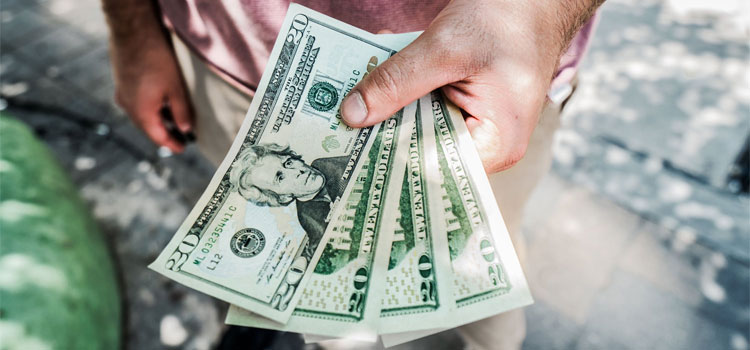If you’re trying to be an online seller and is on a mission to decide between Etsy vs. eBay as a marketplace to focus your efforts on, you’re on the right path.
- Inbox Dollars - Get paid to check your email. $5 bonus just for signing up!
- Survey Junkie - The #1 survey site that doesn't suck. Short surveys, high payouts, simply the best.
- Nielsen - Download their app and get paid $50!
Many sellers skip this step, jumping head first into an environment they’re not really familiar with.
The problem occurs when they find out later in the game that the marketplace they chose isn’t really compatible with the niche of their items for sale or the type of audience active in that platform.
If you want to reap the most benefits in terms of sales and market reach, which marketplace do you choose?
Read on for a comprehensive comparison of Etsy vs. eBay from a seller’s perspective…
Etsy vs. eBay Target Market
Etsy and eBay are very different marketplaces.
If you already have an idea of what you’re going to sell, choosing between Etsy vs. eBay is easy.
Etsy is home to many creative people who sell their handmade items on the platform.
The website encourages made-to-order and customization of items, but do not allow second-hand items.
As such, the buyers you see at Etsy are expecting to find unique items, supplies for arts and crafts, or vintage items (that are over 20 years or older).
On the other hand, eBay is a monster when it comes to online selling.
You can list any kind of item there, as long as it isn’t illegal. Sellers who are planning to sell a wide range of items can do so without question.
Etsy vs. eBay Seller’s Fees
I understand why listing cost is a concern for you.
Fees will affect your business, even if it involves only cents per listing. These fees add up real quick, especially if you’re selling in bulk.
Etsy follows a simple seller’s fee:
- No joining/membership fee (start a store right away FREE)
- Pay Etsy $0.20 for every listing you post. It can stay online up to 4 months or once you sell the item. You’d have to pay another $0.20 if you’re going to re-list the item.
- Pay Etsy 3.5% of the item’s price if someone buys the item.
eBay has a bit more fees than Etsy. The fees also vary if you’re just an individual selling items on eBay, or if you decide to open an eBay store.
- Membership fee for personal-use eBay is free, while an eBay store has a flat-fee depending on the type of plan you choose.
- eBay gets $0.20 for every item listed. It is valid for 30 days.
- Final value fees (transaction fee per listing) also vary with each category, but it ranges from 8% to 15% of the sale price.
- eBay also gets a cut on the amount you charge customers for shipping.
eBay stores do have some benefits over personal-use eBay, such as free listings monthly and zero transaction fees, among others.
If possible, don’t stick to only fees when choosing the marketplace to build on.
Check out the pros and cons of Etsy, as well as the pros and cons of eBay to get a deeper understanding of how each platform could be the right or wrong one for your business.
Pros and Cons of Etsy
Etsy is home to over 40 million active members.
It is definitely a lot smaller than eBay in terms of membership size, but this is one of the things that make Etsy special.
Niche audience
The best thing about Etsy is that the people who visit this website are divided into two groups
- those who explores the listings in hope of finding something special, and
- those who know exactly what they need (supplies for jewelry making, or sewing patterns, etc.)
The buyers at Etsy are not looking for mass-produced stuff. They know that the marketplace features thousands of artsy, creative people from glass-blowing artists, painters, pottery masters, and so on.
No joke. Here are the fastest ways to make easy money online. Click here to see how.
User-friendly set-up
If this is the first time you’ve joined an online marketplace, Etsy won’t make you feel like a total beginner.
Instead, you can quickly set-up your listing, payment options, shipping details, and other store elements without CSS or coding knowledge.
A community of helpful folk
Etsy has a reliable customer support.
Plus, the site also has an active forum, where many sellers and buyers alike hang out.
Selling on Etsy Cons
The main reason why people get turned off by Etsy is that it still adds two kinds of fees on every listing (listing charge and finale sale fee).
Unfortunately, there’s no going around these fees.
Branding and standing out on Etsy can be hard when you’re starting out. This is because the listings look exactly the same – there are no customization options available.
The only way to get a bit of an edge over your competition is to take gorgeous product photos and produce eye-catchy graphic design.
Pros and Cons of eBay
eBay is the largest online buy-and-sell marketplace in the world.
It is home to 25 million sellers and an outstanding 75 million buyers.
List Products Effortlessly
eBay has been around since 1995.
Imagine how many times the company has improved the method of listing products.
Even if you’re new to eBay, you can list products as quickly and easy as possible.
eBay guides you every step of the way, so there’s no way you can get lost navigating the listing manager.
Global Reach
The best thing about eBay is that it is available both locally and globally.
You can choose to sell your items only locally, or take advantage of selling products that may not be available in other countries.
As long as you follow the rules of eBay, the world can be your oyster (while sitting in the comforts of your own home).
How cool is that?
Selling on eBay Cons
eBay has a lot of attractive features, but there are 3 major things that may turn your off from selling on this platform:
You can make money from home and it doesn't have to be challenging. Click here to see how.
1. Complicated and Expensive Fees
Fees on eBay vary from one listing to the next. The amount depends largely on the type and value of product you’re selling.
The finale sale fee can eat up most of your earnings, especially if the eBay’s cut goes higher than the average 10 to 15 percent. This is especially true for high-priced items.
2. Sold Items aren’t Paid Instantly
Buyers may have bought an item from you, but it doesn’t mean the money is transferred to you immediately.
Unfortunately, eBay has no control over how fast or slow buyers pay for the items they buy on the website.
Buyers may even fail to pay for the product you thought was already sold.
From the seller’s perspective, this can be annoying, time-consuming, and even financially-destroying.
3. Unfair Buyer Protection Policies
eBay favors the buyers over sellers all the time.
This means that if you and your buyer get into a dispute (about the item, shipping, etc.), there’s a bigger chance that eBay decides in favor of buyers, even if you’re in the right.
Unfortunately, even if eBay receives complaints about this from sellers around the world, unfair dispute results still happens.
Who Wins between Etsy vs. eBay?
Interestingly, Etsy and eBay are such opposites that I bet you’d be able to decide, even before you finish reading this comprehensive comparison.
I recommend you go with eBay if you’re planning to sell mass-produced, low-priced items that you can buy cheap and sell high.
If you’re going to sell one-of-a-kind handmade products or vintage items, Etsy is definitely the marketplace for you.
You can also sell items on both marketplaces, if you wish. But it means fees will multiple as well.
Do know that both platforms have copycats that will steal your idea, product images, and even product description word-per-word. Once a product begins selling like hotcakes, get ready for other sellers replicating your listings.
Not interested in either eBay or Etsy? Check 4 of the best ecommerce platforms you can try out.
Don’t rule out becoming an Amazon seller either.
Amazon is a household name for a reason.
A Better Alternative to eBay or Etsy
Whichever route you took between Etsy vs. eBay, it’s important to note that these third-party owned marketplaces will remain just that – owned by other companies.
As such, you don’t really have a say if eBay or Etsy decides to close shop, increase fees, or change rules that will affect your business.
I say start with eBay or Etsy, and if you’re ready to go solo, create your own website (with a store) and sell products without having to pay fees and while pocketing 100% of the profits.
You can even create exciting promos, which in turn, build customer loyalty and brand recognition.






I couldn’t agree more. Now they are combining ad dollars with Google shopping.
Sales went from 25,000 a month this year to around $5,000. Another huge issue with Etsy is the new CEO and management turn their heads to the Aliexpress reseller/drop shippers.
Etsy has lost its mission of a unique artesian handcrafted venue. In all reality its all about the dollar now with Etsy and it doesn’t care much about the artist that made Etsy what it is. We are also going to open an Ebay store, at least Ebay is honest and transparent about where the products are coming from. Buyers should be aware that just because it says its handmade doesn’t mean it is not coming straight from a factory in China, do your research. Read reviews and right click on the image.
Update Spring Etsy Change mentioned in 2018…. bad change part 2. THIS summer (2019)Etsy PTB is pressuring to offer Free Shipping. It already is doing a test run “paying the fees” but still charging handling on the seller. The shipping is free for purchases at one shop over 30 bucks. But does not take in size weight or destination.
Etsy had a good run but is likely to be a bad place for small artisans before 2020
Steve, thanks for the article. Etsy increased the pricing structure last summer. Transaction fees are longer 3.5% per sold item but 5%. They are also charging the transaction fee on shipping, which is new. They continued the 20 cents per listing and 3.5% plus 25 cents for merchant fees of the total. The change, like EBay has made it more difficult for sellers to calculate transactions fees, especially if they include part of the transaction fee in their selling price as you will not know your potential transaction fee on the shipping until the item is sold. It’s steered me away from any international shipping through Etsy because shipping internationally is more expensive–so I will pay more overall in transaction fees than if the item sells to a US customer. It also makes it difficult to sell lower priced but heavier items, because again, the ratio of the overall transaction fees to the item price is greater than the other way around.
Well, I was going through a website as I got to heard a lot from eBay sellers. This could be a perfect alternative of eBay in my research. TrueGether is the name of it. I hope you will look into it and let us know if it is bad or ok?
Not sure of the results.